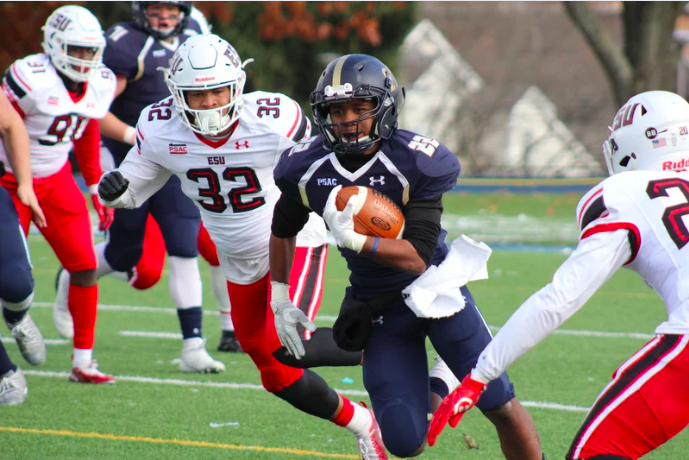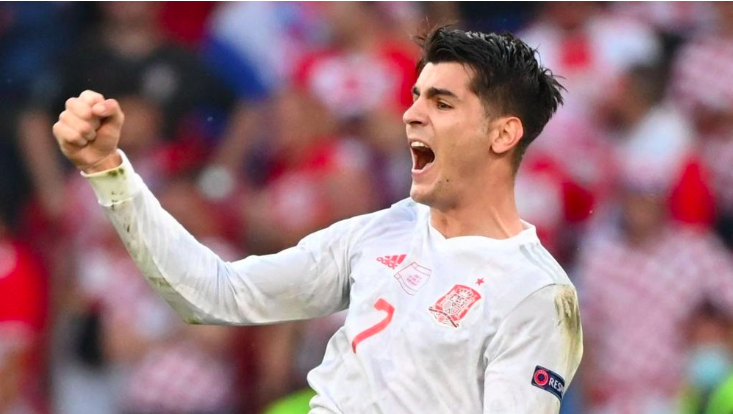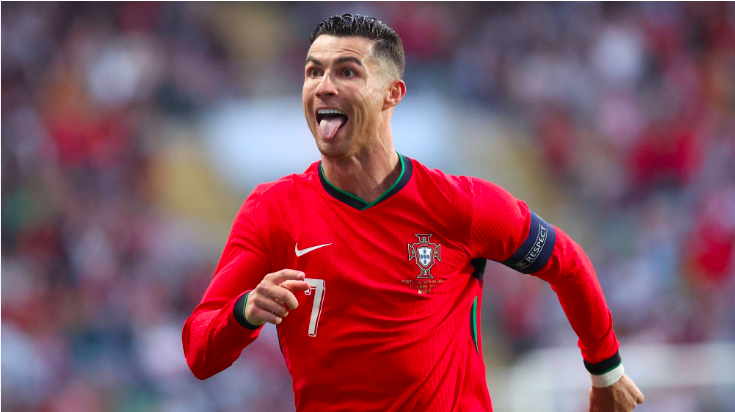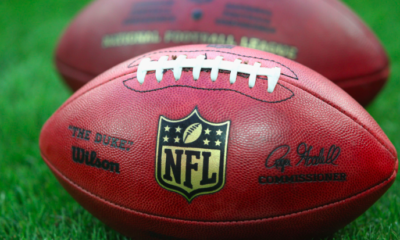Football
What Are The Basic Rules Of The American Football?

What Are The Basic Rules Of The American Football?
Welcome to the exciting world of American football, where athleticism meets strategy in a thrilling display of skill and teamwork. To fully appreciate the game, it’s essential to understand its basic rules and mechanics. From scoring touchdowns to executing tackles, American football is a sport rich in tradition and excitement. Let’s delve into the fundamentals that shape this iconic game and uncover the key rules that drive its action-packed gameplay.
Team Composition in American Football: Understanding the Roles and Responsibilities
American football is a complex and dynamic sport that requires coordination among players with diverse skill sets and positions. The team composition in American football is crucial for executing plays effectively and achieving success on the field. Let’s delve into the intricate roles and responsibilities of each position:
Offense:
- Quarterback (QB): The quarterback is often regarded as the most critical position on offense. They are responsible for orchestrating plays, calling audibles, and making split-second decisions. The quarterback either passes the ball to receivers downfield, hands it off to running backs, or occasionally runs with it themselves.
- Running Back (RB): Running backs are versatile players who can run with the ball, catch passes, and block defenders. They typically line up behind or beside the quarterback and are essential for gaining yards on the ground and providing options in the passing game.
- Wide Receiver (WR): Wide receivers are fast and agile athletes who line up on the line of scrimmage and run routes to catch passes from the quarterback. They must possess excellent speed, hands, and route-running ability to create separation from defenders and make receptions.
- Tight End (TE): Tight ends are hybrid players who combine the blocking ability of offensive linemen with the receiving skills of wide receivers. They line up on the end of the offensive line and can block defenders or catch passes depending on the play call.
- Offensive Line (OL): The offensive line consists of five players—two tackles, two guards, and a center—who form a protective barrier around the quarterback and create running lanes for the ball carrier. They must work together to block defenders and maintain the integrity of the pocket.
Defense:
- Defensive Line (DL): The defensive line is responsible for stopping the run, pressuring the quarterback, and disrupting offensive plays. It comprises defensive tackles and defensive ends who use a combination of strength, speed, and technique to defeat blockers and make tackles.
- Linebackers (LB): Linebackers are versatile defenders positioned behind the defensive line. They have the dual responsibility of stopping the run, covering receivers, and blitzing the quarterback. Linebackers must be agile enough to cover ground quickly and strong enough to shed blocks and make tackles.
- Cornerbacks (CB): Cornerbacks are defensive backs who line up opposite wide receivers and prevent them from catching passes. They must possess exceptional speed, agility, and ball skills to defend against passes and make interceptions.
- Safeties (S): Safeties are the last line of defense and provide deep coverage against long passes. They must possess excellent tackling ability, awareness, and anticipation to defend against both the pass and the run.
Special Teams:
- Kicker (K): Kickers are responsible for kicking field goals, extra points, and kickoffs. They must have strong legs and impeccable accuracy to score points for their team.
- Punter (P): Punters kick the ball downfield on fourth down to change field position and pin the opposing team deep in their territory. They must have the ability to kick the ball high and far while maintaining control and accuracy.
- Long Snapper: Long snappers specialize in accurately snapping the ball to the punter or holder on field goal and extra point attempts. Their precise snaps are essential for successful special teams plays.
- Returners: Returners field punts and kickoffs and attempt to advance the ball downfield. They must possess exceptional speed, agility, and vision to evade tacklers and create scoring opportunities for their team.
Understanding the roles and responsibilities of each position is essential for players, coaches, and fans alike. By working together and executing their duties effectively, teams can maximize their chances of success on the field in American football.
The Objective of American Football: Scoring, Strategy, and Teamwork
American football, often referred to simply as football in the United States and Canada, is a dynamic and strategic sport with a clear objective: to outscore the opposing team by advancing the ball into their end zone. Let’s explore the multifaceted objectives of American football, which go beyond mere scoring to encompass strategic playcalling, teamwork, and tactical execution.

Scoring Points:
- Touchdown (6 points): The primary objective of an American football team is to score touchdowns. A touchdown occurs when a player carries the ball across the opponent’s goal line or catches a pass in the end zone. It is the most valuable scoring play, worth six points.
- Extra Point (1 or 2 points): After scoring a touchdown, the scoring team has the option to attempt an extra point. They can either kick the ball through the uprights for one point or attempt a two-point conversion by running or passing the ball into the end zone again.
- Field Goal (3 points): A field goal is scored when the kicker successfully kicks the ball through the opponent’s uprights. Field goals are typically attempted on fourth down when the offense is within range of the opposing team’s end zone but unable to score a touchdown.
- Safety (2 points): A safety is awarded to the defensive team when they tackle an offensive player in possession of the ball in their own end zone. It is worth two points and results in the defensive team gaining possession of the ball through a kickoff.
Strategic Playcalling:
- Offensive Strategy: The objective of the offensive team is to advance the ball down the field and score points. Offensive playcalling involves a combination of running plays, where the ball carrier attempts to gain yards by running with the ball, and passing plays, where the quarterback throws the ball to receivers downfield.
- Defensive Strategy: The defensive team aims to prevent the opposing team from scoring by tackling ball carriers, intercepting passes, and forcing turnovers. Defensive playcalling involves strategies such as blitzing, where defenders rush the quarterback to disrupt passing plays, and coverage schemes, where defenders cover receivers to prevent them from catching passes.
Teamwork and Tactical Execution:
- Offensive Teamwork: Achieving the objective of scoring points requires cohesive teamwork and tactical execution on offense. Players must work together to block defenders, create running lanes for ball carriers, and execute passing routes to gain yards and score touchdowns.
- Defensive Teamwork: Similarly, the defensive team must work together to stop the opposing team’s offense from scoring. Players must communicate effectively, maintain their assigned coverage responsibilities, and swarm to the ball to make tackles and force turnovers.
Duration of American Football: Four Quarters of Intense Action
American football is characterized by its structured game duration, divided into four quarters, each with its own unique dynamics and strategic considerations. Let’s delve into the duration of an American football game and how it impacts the flow and outcome of the contest.
Four Quarters:
- First Quarter: The game begins with the first quarter, lasting 15 minutes on the game clock. During this period, both teams aim to establish momentum and gain an early advantage. Coaches often use this time to assess the opposing team’s strategies and adjust their game plans accordingly.
- Second Quarter: Following the first quarter, teams switch sides of the field, and the second quarter commences. Like the first quarter, it also lasts 15 minutes. Teams continue to execute their offensive and defensive strategies, with a focus on capitalizing on scoring opportunities and minimizing mistakes.
- Halftime: At the conclusion of the second quarter, a halftime break occurs, typically lasting around 12-15 minutes. During halftime, players have the opportunity to rest, hydrate, and receive coaching adjustments from their respective coaching staff. Halftime entertainment, such as performances or presentations, often adds to the spectacle of American football games.
- Third Quarter: The second half of the game begins with the third quarter, which mirrors the format of the first two quarters, lasting 15 minutes. Teams reassess their strategies based on halftime adjustments and strive to gain or maintain momentum as the game progresses.
- Fourth Quarter: The final quarter of the game, also lasting 15 minutes, is often the most crucial. Teams may find themselves trailing or leading by narrow margins, intensifying the competition and strategic decision-making. The fourth quarter often features dramatic comebacks, last-minute scoring drives, and defensive stands as teams vie for victory.
Clock Management:
- Play Clock: In addition to the game clock, American football features a play clock, which dictates the time each team has to snap the ball and execute a play. The play clock typically lasts 40 seconds, although it may be adjusted in certain situations.
- Timeouts: Each team is allotted a certain number of timeouts per half, allowing them to stop the game clock and regroup or strategize. Coaches strategically use timeouts to manage the clock, preserve time for crucial plays, or make adjustments during critical moments of the game.
The Field of Play in American Football: An Arena of Strategy and Skill
The field of play in American football serves as the canvas upon which the intricate dance of strategy, athleticism, and teamwork unfolds. From end zone to end zone, each yard of the field carries strategic significance, shaping the flow and outcome of the game. Let’s explore the dimensions, markings, and key elements of the American football field.
Dimensions and Markings:
- Length: An American football field measures 120 yards in length, including both end zones. The field is divided into two equal halves by the midfield line, with each half measuring 50 yards.
- Width: The width of the field is 53 1/3 yards, providing ample space for players to maneuver and execute plays effectively.
- End Zones: Positioned at each end of the field, the end zones serve as the scoring areas for touchdowns. Each end zone measures 10 yards in depth.
- Hash Marks: Hash marks, also known as hash lines, are short lines perpendicular to the yard lines and located every 1 yard. They help determine ball placement and facilitate the execution of certain plays, particularly during field goal attempts and extra-point kicks.
- Yard Lines: Yard lines run horizontally across the field and are spaced 5 yards apart. They provide a reference point for measuring the distance to the end zone and help officials spot the ball accurately during gameplay.
- Goal Posts: Positioned at the back of each end zone, the goal posts consist of two vertical uprights connected by a horizontal crossbar. They serve as the target for field goal and extra-point attempts, with successful kicks passing between the uprights and above the crossbar.
Key Elements:
- Sidelines: The sidelines run along the length of the field and mark the boundary of play. Coaches, players, and officials occupy the sidelines during the game, with strict rules governing their movement and behavior.
- Bench Areas: Located along the sidelines, the bench areas provide designated spaces for teams to gather, strategize, and make substitutions. Players not actively participating in the game often occupy the bench areas, along with coaches and support staff.
- Coaching Boxes: Designated coaching boxes are located on each side of the field, adjacent to the bench areas. Coaches must remain within these boxes during gameplay, with exceptions granted for certain situations, such as timeouts or challenges.
- In-Play Areas: The central portion of the field, between the hash marks, is where the majority of gameplay occurs. Teams strategically advance the ball toward the opposing end zone while defending against their opponents’ offensive efforts.
Starting and Restarting the Game: Essential Phases in American Football
In American football, the process of starting and restarting the game is crucial for setting the tone of play, initiating scoring opportunities, and maintaining the flow of the match. From the opening kickoff to the various types of restarts after stoppages, each phase carries its own significance and strategic considerations. Let’s delve into the intricacies of starting and restarting the game in American football.
Opening Kickoff:
- Coin Toss: Before the kickoff, a coin toss determines which team will kick off and which team will receive the ball to start the game. The team winning the coin toss typically chooses whether to kick off or receive the opening kickoff.
- Kickoff Formation: The kicking team lines up at their own 35-yard line, ready to kick the ball to the receiving team. The receiving team positions players strategically to receive the kick and potentially return it for yardage.
- Kickoff: A designated player from the kicking team (usually the kicker) kicks the ball from a tee at the 35-yard line toward the opposing team’s end zone. The receiving team attempts to catch the ball and advance it as far down the field as possible.
- Return and Down: Upon catching the kickoff, the receiving team can attempt to return the ball by running it back toward the opposing end zone. The play ends when the ball carrier is tackled, steps out of bounds, or scores a touchdown.
Restarting After Stoppage:
- Kickoff After Scoring: Following a touchdown or field goal, the scoring team kicks off to the opposing team from their own 35-yard line, similar to the opening kickoff.
- Kickoff After Safety: In the rare event of a safety (when the defensive team tackles an offensive player in their own end zone), the team that conceded the safety kicks off from their own 20-yard line to the team that scored the safety.
- Kickoff After Halftime: At the start of the second half, the team that kicked off to start the game receives the kickoff to begin the third quarter. The opposing team receives the kickoff to start the game.
- Free Kick After Fair Catch: If a player from the receiving team makes a fair catch on a kickoff or punt, they have the option to attempt a free kick from the spot of the catch. This allows the receiving team to attempt a field goal without facing defensive pressure.
- Kickoff After Touchback: If the receiving team does not attempt to return a kickoff and the ball is downed in their own end zone, they are awarded a touchback. The ball is placed at their own 25-yard line, and they begin their offensive drive from there.
Ball In and Out of Play: Understanding Key Concepts in American Football
In American football, the status of the ball—whether it’s in play or out of play—dictates the flow of the game and influences strategic decision-making. From understanding the definition of a live ball to recognizing when the ball is considered dead, these concepts are fundamental to grasping the dynamics of the sport. Let’s explore the nuances of the ball in and out of play in American football.
Key Concepts:
- Live Ball:
- A live ball refers to the period during a play when the ball is legally in play and active. During this time, players from both teams can attempt to gain possession of the ball, advance it down the field, or score points.
- The ball remains live until certain conditions occur, such as the ball carrier being tackled, the ball going out of bounds, or a forward pass being incomplete.
- Dead Ball:
- A dead ball indicates that play has temporarily stopped, and the ball is no longer in play. This can happen for various reasons, including when a play is over, a penalty is called, or a timeout is taken.
- When the ball is dead, players must cease all action, and the next play cannot commence until the ball is made live again by the officials.
- Inbounds and Out of Bounds:
- The boundary lines of the football field determine whether the ball is considered in play or out of play. If the ball crosses the sidelines (side boundary lines) or the end zone lines, it is considered out of bounds.
- When the ball goes out of bounds, the officials typically spot it at the point where it crossed the boundary line. Depending on the situation, the clock may stop temporarily, and the next play may begin from that spot.
- Whistle Blows:
- The sound of the referee’s whistle is a signal that the ball is no longer in play and that a dead-ball situation has occurred. The whistle is blown to stop play, indicating that the current down is over and signaling players to cease activity.
- Ball Recovery:
- When the ball is fumbled or otherwise becomes loose during a play, both teams have the opportunity to recover it and gain possession. The team that recovers the ball gains control and the opportunity to start their offensive drive.
Strategic Considerations:
- Field Position: Understanding the location of the ball relative to the field boundaries is crucial for strategic decision-making, such as whether to attempt to advance the ball further down the field or kick it out of bounds to gain better field position.
- Clock Management: Coaches and players must be mindful of the game clock and how the status of the ball affects the timing of plays. In certain situations, deliberately running the ball out of bounds or allowing it to be tackled in bounds can impact the clock management strategy.
- Possession Changes: Transitioning between live-ball and dead-ball situations often involves quick shifts in momentum and possession. Teams must adapt their strategies based on whether they have possession of the ball or are defending against the opposing team’s offense.
Scoring in American Football: Understanding Points and Methods of Scoring
Scoring in American football is pivotal, as it determines which team gains the advantage and ultimately wins the game. From touchdowns to field goals, various methods exist for scoring points, each with its own set of rules and strategic implications. Let’s delve into the scoring system of American football to understand how teams accumulate points and the significance of each scoring method.
Touchdowns:
- Definition: A touchdown is the most significant scoring play in American football, worth six points. It occurs when a player possessing the ball crosses the opponent’s goal line, either by running with the ball or catching a pass in the end zone.
- Execution: To score a touchdown, the offensive team must advance the ball into the opponent’s end zone while maintaining possession and avoiding being tackled or having the ball intercepted.
- Impact: Touchdowns are highly coveted as they provide the most substantial point advantage in a single play. They not only contribute to a team’s overall score but also energize players and fans, often shifting momentum in favor of the scoring team.
Extra Points:
- Definition: After scoring a touchdown, the scoring team has the opportunity to earn additional points through extra point attempts. There are two primary methods for earning extra points:
- Point After Touchdown (PAT): The most common method involves kicking the ball through the opponent’s goal posts from a specified distance, typically 20 yards for professional football. A successful PAT adds one point to the team’s score.
- Two-Point Conversion: Alternatively, the scoring team can attempt a two-point conversion by advancing the ball into the end zone from the opponent’s two-yard line. If successful, this play adds two points to the team’s score.
Field Goals:
- Definition: A field goal is a scoring play worth three points, achieved by kicking the ball through the opponent’s goal posts during a designated field goal attempt.
- Execution: Field goals are typically attempted on fourth down when the offensive team is within kicking range but unable to advance the ball to the end zone. A team’s kicker kicks the ball from the line of scrimmage, aiming to send it between the goal posts.
- Impact: Field goals are valuable scoring opportunities, especially in close games where every point matters. They require precision and skill from the kicker and often serve as a strategic decision for teams facing challenging field position or time constraints.
Safety:
- Definition: A safety is a rare scoring play worth two points, awarded to the defensive team when it tackles an offensive player possessing the ball in their own end zone.
- Execution: Safeties typically occur when the offensive team is pinned deep in its territory, unable to advance the ball out of the end zone. If the defense successfully tackles the ball carrier behind their own goal line, a safety is awarded.
- Impact: Safeties are significant scoring plays for the defensive team, as they not only add points to the scoreboard but also result in a change of possession. They often occur in critical moments, such as when a team is attempting to avoid a touchdown or gain field position.
Fouls and Misconduct in American Football: Understanding Penalties and Infractions
Fouls and misconduct play a significant role in American football, influencing gameplay, field position, and ultimately, the outcome of the game. Understanding the various penalties and infractions is crucial for players, coaches, officials, and fans alike, as they dictate the flow of the game and enforce fair play. Let’s explore the different types of fouls and misconduct in American football and their implications.
Types of Fouls:
1. Offensive Holding:
- Definition: Offensive holding occurs when an offensive player uses their hands, arms, or body to restrict or impede a defensive player, thereby preventing them from making a play.
- Penalty: The offensive team incurs a 10-yard penalty from the spot of the foul, resulting in a loss of down if the penalty occurs behind the line of scrimmage.
2. Pass Interference:
- Definition: Pass interference occurs when a defensive player interferes with an eligible receiver’s ability to catch a forward pass, such as by making contact before the ball arrives or restricting the receiver’s movement.
- Penalty: Pass interference results in a spot foul, meaning the offensive team gains yardage equal to the spot of the foul or is awarded the ball at the spot of the foul if the infraction occurs in the end zone.
3. Unnecessary Roughness:
- Definition: Unnecessary roughness involves excessive or unnecessary force by a player, such as tackling an opponent violently or engaging in dangerous play after the ball is dead.
- Penalty: Unnecessary roughness results in a 15-yard penalty and potential ejection from the game if the infraction is severe or repeated.
4. Illegal Blocking:
- Definition: Illegal blocking encompasses various infractions related to blocking, including illegal use of hands, blocking below the waist, or blocking in the back.
- Penalty: The penalty for illegal blocking varies depending on the specific infraction but typically results in a 10-yard penalty from the spot of the foul.
5. Delay of Game:
- Definition: Delay of game occurs when a team fails to initiate a play within the allotted time, typically 25 seconds from the end of the previous play.
- Penalty: Delay of game results in a 5-yard penalty against the offending team, enforced by moving the ball back from the original line of scrimmage.
Misconduct:
1. Taunting:
- Definition: Taunting involves unsportsmanlike conduct by a player, such as engaging in provocative gestures, verbal abuse, or excessive celebration directed at opponents.
- Penalty: Taunting results in a 15-yard penalty and potential ejection from the game if deemed severe or repeated.
2. Personal Fouls:
- Definition: Personal fouls encompass a range of unsportsmanlike behaviors, including fighting, striking, or intentionally injuring an opponent.
- Penalty: Personal fouls result in a 15-yard penalty and potential ejection from the game, depending on the severity of the infraction.
3. Illegal Substitutions:
- Definition: Illegal substitutions occur when a player enters or exits the field improperly, such as failing to report to the referee or leaving the field without authorization.
- Penalty: Illegal substitutions result in a 5-yard penalty against the offending team.
4. Unsportsmanlike Conduct:
- Definition: Unsportsmanlike conduct encompasses any behavior deemed contrary to the spirit of fair play and sportsmanship, such as arguing with officials, using profanity, or displaying disrespectful conduct.
- Penalty: Unsportsmanlike conduct results in a 15-yard penalty and potential ejection from the game, depending on the severity of the infraction.
Offside Rule in American Football: Understanding Player Positioning and Infractions
In American football, the offside rule governs the positioning of players before and during the snap, ensuring fair play and preventing teams from gaining an unfair advantage. Understanding the offside rule is essential for players, coaches, officials, and fans, as it influences the outcome of plays and can result in penalties if violated. Let’s delve into the intricacies of the offside rule in American football and how it impacts the game.
Offside Rule Overview:
1. Definition:
- Offside occurs when a player on the defensive team crosses the line of scrimmage and makes contact with an opponent or interferes with the offensive team’s play before the ball is snapped.
2. Line of Scrimmage:
- The line of scrimmage is an imaginary line that extends across the width of the field at the spot where the ball is placed for the next play. It separates the offensive and defensive teams before the snap.
3. Neutral Zone:
- The neutral zone is the area between the two lines of scrimmage, where the ball is placed before the snap. It exists to ensure both teams have an equal chance to react to the snap without encroaching on each other’s territory.
4. Infractions:
- If a defensive player crosses the line of scrimmage and makes contact with an opponent or interferes with the offensive team’s play before the ball is snapped, it constitutes an offside infraction.
5. Penalty:
- Offside results in a penalty against the defensive team, typically a 5-yard penalty from the previous spot. The offensive team may decline the penalty if the play results in a significant gain.
6. Exceptions:
- There are certain exceptions to the offside rule, such as when a player jumps offside but manages to return to the neutral zone before the snap without making contact with an opponent or interfering with the play. In such cases, the play may continue without penalty.
Offside Infractions:
- Encroachment: Encroachment occurs when a defensive player enters the neutral zone and makes contact with an opponent or causes the offensive team to react before the ball is snapped. It is a type of offside infraction.
- Neutral Zone Infraction: A neutral zone infraction occurs when a defensive player enters the neutral zone and causes the offensive team to react, even if no contact is made. It is also considered an offside infraction and results in a penalty against the defensive team.
- False Start: While not a direct offside infraction, a false start occurs when an offensive player moves before the snap, prompting defensive players to react. It results in a penalty against the offensive team, typically a 5-yard penalty from the previous spot.
Importance of Offside Rule:
The offside rule in American football is crucial for maintaining the integrity of the game and ensuring fair competition between teams. By preventing defensive players from gaining an unfair advantage by crossing the line of scrimmage before the snap, the rule helps create a level playing field for both offensive and defensive teams.
Understanding and enforcing the offside rule is essential for officials, as it impacts the outcome of plays and can influence the momentum of the game. Similarly, players and coaches must be aware of the rule to avoid penalties and optimize their strategies during gameplay.
Understanding Turnovers in American Football: Key Moments That Shift Possession
Turnovers are pivotal moments in American football that dramatically shift possession of the ball from one team to another. Whether through interceptions, fumbles, or failed fourth-down attempts, turnovers can significantly impact the outcome of a game. Let’s explore the different types of turnovers in American football and their implications for both offensive and defensive teams.
Types of Turnovers:
- Interceptions: An interception occurs when a defensive player catches a forward pass thrown by the opposing team’s quarterback intended for a receiver. Interceptions often result from defensive players reading the quarterback’s movements and anticipating the pass.
- Fumbles: A fumble happens when a player loses possession of the ball while carrying it, typically due to contact with an opposing player or mishandling. Recovering a fumble allows the opposing team to gain possession.
- Failed Fourth-Down Conversions: If an offensive team fails to convert a fourth-down play, they turn the ball over to the opposing team at the spot of the failed attempt. Fourth-down attempts often occur in situations where the offensive team is unable to advance the ball sufficiently to gain a new set of downs.
- Turnovers on Downs: Turnovers on downs occur when a team fails to advance the ball the required distance to achieve a first down within four downs (or attempts). The opposing team then gains possession at the spot of the failed attempt.
- Blocked Kicks: A blocked kick happens when a defensive player prevents a punt, field goal, or extra point attempt from crossing the line of scrimmage by deflecting the ball. The blocking team gains possession of the ball at the spot of the block.
Implications of Turnovers:
- Momentum Shift: Turnovers can swing momentum in favor of the team that gains possession. A well-timed interception or fumble recovery can energize the team and its fans, while deflating the morale of the opposing team.
- Field Position: The location on the field where a turnover occurs can greatly influence subsequent offensive drives. Turnovers that occur deep in the opponent’s territory provide the offense with excellent scoring opportunities, while turnovers in their own territory can give the opposing team a short field to work with.
- Points Off Turnovers: Offenses that capitalize on turnovers by scoring points off them maximize the impact of those turnovers. Conversely, defenses aim to prevent the opposing team from converting turnovers into points through strong goal-line stands or forcing turnovers of their own.
- Game Management: Coaches must manage turnovers effectively to optimize their team’s chances of success. Strategies may include emphasizing ball security during offensive drives, implementing aggressive defensive schemes to force turnovers, and capitalizing on opponent mistakes.
Understanding Downs and Yards in American Football: Key Concepts for Offense and Defense
Downs and yards are fundamental concepts in American football that determine the progression of offensive drives and defensive strategies. Each play unfolds within a structured framework of downs and yards, shaping the dynamics of the game. Let’s delve into the significance of downs and yards and how they influence gameplay for both offensive and defensive teams.
Downs:
- Definition: A down is a single play in American football, beginning with the snap of the ball by the center and ending when the ball becomes dead or the play is otherwise terminated.
- Four Downs: Each offensive team is granted four downs, or attempts, to advance the ball at least 10 yards toward the opponent’s end zone and achieve a new set of downs.
- Resetting Downs: If the offense successfully gains 10 or more yards within the allotted four downs, they earn a new set of downs, with the first down marker reset at the spot of the ball. This process continues until the offense scores or turns the ball over to the defense.
- Turnover on Downs: If the offense fails to advance the ball 10 yards within four downs, possession of the ball is turned over to the opposing team at the spot of the ball.
Yards:
- Line of Scrimmage: The line of scrimmage is an imaginary line that extends across the width of the field and passes through the forward point of the football when it is set for play.
- Distance to Gain: The offense must advance the ball past the line of scrimmage and beyond a predetermined distance, typically 10 yards, to achieve a new set of downs.
- Yard Markers: Yard markers are painted or placed along the sidelines of the field at intervals of 10 yards, indicating the distance needed to achieve a first down.
- First Down Marker: The first down marker is a visual indicator, often a large orange pole with a yellow banner, positioned along the sidelines to denote the line to gain for a new set of downs.
Importance of Downs and Yards:
- Offensive Strategy: Offenses strategize to maximize their downs and yards, employing a variety of plays and tactics to advance the ball efficiently and sustain drives.
- Defensive Strategy: Defenses aim to prevent the offense from gaining the required yards to achieve a first down, often by disrupting plays, tackling ball carriers, and forcing turnovers.
- Field Position: The location of the line of scrimmage and the distance to gain influence offensive play-calling and defensive positioning, impacting field position and scoring opportunities.
- Clock Management: Downs and yards also play a crucial role in clock management, as offenses may seek to control the time of possession to preserve a lead or mount a comeback.
Exploring Punting and Kicking in American Football: Strategic Tools for Field Position and Scoring
Punting and kicking are integral aspects of American football, serving strategic purposes for both offensive and defensive teams. These specialized techniques involve the controlled release of the football through either punting or kicking motions, each with distinct objectives and outcomes. Let’s delve into the significance of punting and kicking and their impact on the game.
Punting:
- Definition: Punting is a technique used by the offensive team to relinquish possession of the ball to the opposing team while maximizing field position. It typically occurs on fourth down when the offense is unable to advance the ball to a favorable position for a first down or scoring opportunity.
- Execution: During a punt, the punter, usually a specialized player on the team, stands several yards behind the line of scrimmage and receives a snap from the center. The punter then kicks the ball toward the opponent’s end zone, aiming for height and distance to allow the coverage team to down the ball deep in the opponent’s territory.
- Objective: The primary goal of punting is to flip field position by forcing the opposing team to start their offensive drive as far away from their own end zone as possible. This increases the likelihood of the defense stopping the opposing offense and potentially creating a turnover or scoring opportunity.
- Strategic Considerations: Punting strategy may vary based on game situation, field position, and weather conditions. Coaches may opt for directional punts to pin the opposing team along the sidelines or high, booming punts to maximize hang time and coverage.
Kicking:
- Field Goals: Kicking is also utilized for scoring points through field goals, which occur when the offensive team is within range of the opponent’s goalposts but unable to score a touchdown. A designated kicker attempts to kick the football through the uprights of the opponent’s goalposts, earning the team three points if successful.
- Extra Points: Additionally, kicking is employed for extra points following a touchdown. After scoring a touchdown, the offensive team has the option to attempt an extra point by kicking the ball through the uprights, earning one point. Alternatively, they may opt for a two-point conversion by attempting to advance the ball into the end zone again.
- Kickoffs: Kickoffs occur at the beginning of each half, after scores, and following halftime. The kicking team kicks the ball from their own 35-yard line to the receiving team, which attempts to return the ball as far as possible to gain favorable field position for their offensive drive.
- Onside Kicks: In certain situations, particularly when trailing late in a game, teams may attempt onside kicks to regain possession of the ball quickly. This involves intentionally kicking the ball a short distance to allow the kicking team to recover it before it travels 10 yards, giving them another offensive opportunity.
Strategic Impact:
- Field Position: Punting and kicking play a crucial role in field position battles, influencing the starting point of offensive drives and defensive stands. Teams strategically employ punts and kicks to gain a territorial advantage over their opponents.
- Scoring Opportunities: Field goals and extra points contribute valuable points to a team’s overall score, often proving decisive in closely contested games. Kickers play a pivotal role in converting scoring opportunities and swinging momentum in their team’s favor.
- Momentum Shifts: Successful punts, field goals, and well-executed kickoffs can shift momentum in a game, energizing players and fans alike while demoralizing the opposing team. Conversely, missed kicks or blocked punts can provide momentum swings for the opposition.
- Special Teams: Punting and kicking are integral components of special teams play, which encompasses various kicking and return units dedicated to maximizing field position and scoring opportunities while minimizing the opponent’s advantages.
Mastering Clock Management: A Crucial Component of American Football Strategy
Clock management is a vital aspect of American football strategy, especially in crucial moments of the game. Coaches, players, and fans alike recognize the significance of effectively managing the game clock to maximize scoring opportunities, preserve leads, and control momentum. Let’s explore the intricacies of clock management and its impact on the outcome of football games.
Understanding the Game Clock:
- Game Duration: A standard football game consists of four quarters, each lasting 15 minutes at the professional level. In college football, quarters are also 15 minutes long, but game clock stoppages may vary slightly for certain game situations, such as first downs and incomplete passes.
- Play Clock: The play clock is a separate timing mechanism that dictates the time allotted for each offensive play. In the NFL, teams have 40 seconds from the end of the previous play to snap the ball for the next play. In college football, the play clock is typically set to 40 or 25 seconds, depending on various factors.
- Stoppage Rules: The game clock stops for various reasons, including incomplete passes, out-of-bounds plays, penalties, timeouts, and the two-minute warning in each half. Clock stoppages provide teams with opportunities to regroup, strategize, and manage the remaining time effectively.
Key Strategies for Clock Management:
- Running Down the Clock: In situations where a team holds a lead late in the game, running down the clock becomes a primary objective. Coaches may opt for running plays to keep the clock moving and limit the opponent’s opportunities to score. By controlling the tempo of the game, teams can preserve their lead and secure the victory.
- Utilizing Timeouts: Coaches strategically use timeouts to stop the game clock, particularly in critical moments such as the end of halves or when facing time constraints. Timeout management requires careful consideration, as coaches must weigh the benefits of stopping the clock against the risk of depleting their timeout resources too quickly.
- Two-Minute Drill: The two-minute drill is a high-pressure scenario in which teams attempt to score quickly before halftime or the end of the game. Quarterbacks and offenses often rely on a fast-paced, no-huddle approach to conserve time and move the ball down the field efficiently. Effective clock management is essential during the two-minute drill to maximize scoring opportunities.
Clock Management in Special Teams:
1. Punting and Kicking:
- Special teams units play a crucial role in clock management, particularly during punts and field goals. Teams may strategically run down the play clock before punting to minimize the time available to the opposing offense. Similarly, kickers must execute timely kicks to maximize scoring opportunities while minimizing clock stoppages.
2. Kickoff Strategy:
- Kickoff strategy also factors into clock management, especially when teams attempt onside kicks or directional kicks to control field position and time remaining. Special teams coordinators devise game plans to optimize kickoff coverage and limit the opponent’s return opportunities.
The Impact on Game Outcomes:
Clock management can ultimately determine the outcome of football games, with teams that effectively control the clock often securing victories in close contests. Whether protecting a lead, orchestrating a late-game comeback, or executing a game-winning drive, coaches and players must master the art of clock management to succeed in high-pressure situations.
Understanding the nuances of clock management enhances fans’ appreciation for the strategic decisions made on the field and the pivotal moments that shape the outcome of games.
Navigating Overtime: The Thrilling Conclusion to Football Contests
In American football, overtime periods add an extra layer of excitement and suspense to games that end in a tie after regulation play. Overtime rules vary between different levels of the sport, but the fundamental objective remains the same: to determine a winner when the score is deadlocked at the end of regulation. Let’s delve into the intricacies of overtime in American football and how it impacts the outcome of thrilling contests.
Understanding Overtime Rules:
1. NFL Overtime:
- In the National Football League (NFL), overtime follows a modified sudden death format. Each team has an opportunity to possess the ball unless the team that receives the kickoff scores a touchdown on its first possession. If the receiving team kicks a field goal on its initial possession, the opposing team has a chance to possess the ball and either match the field goal to extend the game or score a touchdown to win.
- If neither team scores on their first possession, the game enters sudden death mode, where the next team to score—whether by touchdown, field goal, or safety—wins the game.
2. College Football Overtime:
- College football overtime rules differ from those of the NFL. Each team receives a possession starting at the opponent’s 25-yard line, and they take turns attempting to score. This format is often referred to as “each team getting a chance at offense and defense.”
- If the game remains tied after both teams have had a possession, subsequent overtime periods are played until a winner is determined.
Key Strategies in Overtime:
1. Offensive Strategy:
- Offenses must capitalize on their possessions in overtime, prioritizing ball security, smart play-calling, and execution in the red zone. Coaches may opt for high-percentage passing plays, runs with reliable ball carriers, or strategic use of trick plays to outmaneuver the opposing defense.
2. Defensive Strategy:
- Defenses aim to make timely stops and force turnovers to give their offense an advantage. Coordinators may employ aggressive blitz packages, tight coverage in the secondary, and stout run defense to thwart their opponent’s scoring attempts.
Implications for Game Outcomes:
Overtime scenarios often produce thrilling moments and dramatic finishes, with teams battling relentlessly to secure victory. The outcome of overtime periods can hinge on crucial plays, individual performances, and coaching decisions under pressure. Whether it’s a game-winning touchdown drive, a clutch field goal, or a game-saving defensive stand, overtime provides unforgettable moments that shape the narrative of each football season.
Conclusion
In summary, understanding the basics of American football is crucial for both players and fans alike. From team composition to scoring and clock management, each aspect contributes to the dynamic and strategic nature of the game. So whether you’re a seasoned athlete or a casual observer, grasping these fundamental rules enhances the enjoyment and appreciation of this beloved sport.
Understanding these basic rules lays the foundation for a deeper appreciation of American football and allows fans to enjoy the excitement of the game with greater insight and understanding.

Football
Euro 2024 Power Rankings: Spain Remains Dominant Ahead of Semifinals

Euro 2024 Power Rankings: Spain Remains Dominant Ahead of Semifinals
As Euro 2024 advances to its thrilling semifinal stage, the competition has been nothing short of electrifying. Teams have showcased their prowess on the field, with each match contributing to the ever-evolving power rankings. Spain continues to dominate, holding the top spot as they prepare to face formidable opponents.
This article delves into the performances of the leading teams, the key players who have shone, and the factors that have influenced these rankings.
Spain: The Unwavering Titans
Consistent Dominance
Spain has consistently demonstrated why they are considered one of the favorites to win Euro 2024. Their tactical acumen, coupled with an impressive roster, has made them a formidable opponent. Spain’s journey through the tournament has been marked by clinical performances and strategic brilliance.
Key Players
- Pedri: The young midfielder has been a revelation, dictating play with his vision and technical skills. His ability to control the tempo of the game has been crucial for Spain.
- Alvaro Morata: Despite facing criticism, Morata has been pivotal in leading the attack, scoring crucial goals and creating opportunities for his teammates.
Tactical Mastery
Spain’s tactical approach, under the guidance of their experienced coach, has been impeccable. Their possession-based style, high pressing, and quick transitions have left opponents struggling to keep up.
France: The Powerhouse Contenders
Strength in Depth
France has showcased their strength in depth throughout the tournament. Their squad, brimming with world-class talent, has navigated through challenging fixtures with relative ease.
Key Players
- Kylian Mbappe: The star forward has lived up to expectations, delivering match-winning performances with his blistering pace and clinical finishing.
- N’Golo Kante: Kante’s defensive prowess and tireless work rate have been instrumental in breaking up opposition attacks and maintaining midfield stability.
Strategic Flexibility
France’s ability to adapt their tactics to different opponents has been a key factor in their success. Their versatility, combined with individual brilliance, has made them a daunting prospect for any team.
England: The Resilient Challengers
A Blend of Youth and Experience
England has struck a balance between youthful exuberance and experienced heads. This blend has propelled them into the semifinals, with standout performances across the squad.
Key Players
- Harry Kane: The captain has led by example, scoring vital goals and providing leadership on and off the pitch.
- Phil Foden: The young midfielder has dazzled with his creativity and flair, becoming a key figure in England’s attacking setup.
Solid Defensive Setup
England’s defensive solidity has been a cornerstone of their success. Their well-organized backline and disciplined approach have frustrated opponents, limiting their goal-scoring opportunities.
Netherlands: The Dark Horses
Surprise Package
The Netherlands have emerged as the dark horses of Euro 2024. Despite being underdogs, their spirited performances have earned them a place in the semifinals.
Key Players
- Memphis Depay: Depay’s flair and goal-scoring ability have been vital for the Netherlands, providing them with a cutting edge in attack.
- Frenkie de Jong: The midfielder’s composure and playmaking skills have been crucial in controlling the midfield and dictating the pace of the game.
Team Cohesion
The Netherlands’ success can be attributed to their strong team cohesion and collective effort. Their ability to work as a unit has compensated for any perceived lack of individual star power.
Portugal: The Ronaldo Factor
Ronaldo’s Influence
Cristiano Ronaldo continues to be a driving force for Portugal. His leadership and goal-scoring prowess have been pivotal in their journey to the semifinals.
Key Players
- Bruno Fernandes: Fernandes’ creativity and vision have provided Portugal with a dynamic edge in the attacking third.
- Ruben Dias: The defender’s solidity at the back has been crucial in ensuring Portugal’s defensive resilience.
Tactical Discipline
Portugal’s tactical discipline, combined with Ronaldo’s brilliance, has seen them navigate through tough matches. Their structured approach and ability to capitalize on key moments have been instrumental.
Italy: The Tactical Maestros
Defensive Solidity
Italy’s defensive solidity has been a hallmark of their Euro 2024 campaign. Their well-drilled backline and tactical organization have made them difficult to break down.
Key Players
- Giorgio Chiellini: The veteran defender has led by example, marshalling the defense with authority and experience.
- Lorenzo Insigne: Insigne’s creativity and goal-scoring ability have provided Italy with a crucial attacking outlet.
Tactical Brilliance
Italy’s tactical brilliance, under their astute coach, has been evident in their game management and strategic execution. Their ability to control matches and exploit weaknesses has been key to their success.
Germany: The Rebuilding Giants
Rejuvenation and Youth
Germany has undergone a period of rejuvenation, integrating young talents into the squad. This blend of youth and experience has brought fresh energy and dynamism to the team.
Key Players
- Joshua Kimmich: Kimmich’s versatility and leadership have been central to Germany’s midfield dominance.
- Serge Gnabry: Gnabry’s pace and goal-scoring ability have added a new dimension to Germany’s attack.
Strategic Rebuild
Germany’s strategic rebuild, focusing on youth development and tactical innovation, has laid the foundation for their resurgence. Their progress in Euro 2024 is a testament to this vision.
Belgium: The Golden Generation
Experienced Core
Belgium’s golden generation, featuring experienced stars, has once again demonstrated their quality. Their journey to the semifinals has been marked by impressive performances and resilience.
Key Players
- Kevin De Bruyne: De Bruyne’s playmaking skills and vision have been instrumental in orchestrating Belgium’s attacks.
- Romelu Lukaku: Lukaku’s physical presence and goal-scoring prowess have been vital for Belgium’s success.
Tactical Adaptability
Belgium’s tactical adaptability, combined with their experienced core, has allowed them to navigate through challenging fixtures. Their ability to adjust their game plan has been a key factor in their progress.
Croatia: The Resilient Warriors
Never-Say-Die Attitude
Croatia’s never-say-die attitude has seen them through to the semifinals. Their resilience and fighting spirit have been on full display throughout the tournament.
Key Players
- Luka Modric: The veteran midfielder continues to be the heartbeat of the team, dictating play with his vision and composure.
- Ivan Perisic: Perisic’s versatility and goal-scoring ability have provided Croatia with crucial attacking options.
Collective Effort
Croatia’s success has been a result of collective effort and determination. Their ability to rise to the occasion and perform under pressure has been commendable.
Semifinal Predictions and Prospects
Spain vs. Netherlands
Spain’s tactical superiority and depth in squad make them favorites against the Netherlands. However, the Dutch team’s cohesion and fighting spirit could spring a surprise.
France vs. England
The clash between France and England promises to be a thrilling encounter. Both teams have shown exceptional quality, and the outcome may hinge on individual brilliance and tactical execution.
Conclusion
As Euro 2024 heads into the semifinals, the excitement and anticipation continue to build. Spain remains the team to beat, but the competition is fierce, with each semifinalist bringing unique strengths and qualities to the table. The journey so far has been a testament to the skill, strategy, and resilience of these top teams. As fans, we can look forward to thrilling matches and unforgettable moments as the tournament reaches its climax.
Frequently Asked Questions (FAQs)
Who are the key players to watch in the Euro 2024 semifinals?
Key players to watch include Spain’s Pedri, France’s Kylian Mbappe, England’s Harry Kane, and the Netherlands’ Memphis Depay. Each of these players has significantly impacted their teams’ performances.
How has Spain maintained its top position in the power rankings?
Spain has maintained its top position through consistent performances, tactical brilliance, and the contributions of key players like Pedri and Alvaro Morata.
What factors contribute to a team’s success in Euro 2024?
Factors contributing to a team’s success include tactical strategy, individual brilliance, team cohesion, and the ability to adapt to different opponents and match situations.
How has France’s versatility helped them in the tournament?
France’s versatility has allowed them to adapt their tactics to different opponents, making them a formidable and unpredictable team. This adaptability has been crucial in their journey to the semifinals.
What are the prospects for the semifinal match between France and England?
The semifinal match between France and England promises to be highly competitive. Both teams have shown exceptional quality, and the outcome may depend on tactical execution and moments of individual brilliance.
For more information, visit the original article on ESPN.
Football
Euro 2024: Alvaro Morata Speaks Out About ‘No Respect’ in Spain

Euro 2024: Alvaro Morata Speaks Out About ‘No Respect’ in Spain
Alvaro Morata, a prominent figure in Spanish football, has recently voiced his frustrations regarding the lack of respect he feels he receives in his home country. As Spain gears up for Euro 2024, Morata’s statements have sparked widespread discussion and debate among fans, pundits, and the media. This article delves into the context of Morata’s comments, his career journey, the implications for Spain’s national team, and the broader impact on football culture in Spain.
Alvaro Morata: A Brief Overview
Early Career and Rise to Prominence
Alvaro Morata began his professional career with Real Madrid, where he quickly made a name for himself with his exceptional goal-scoring abilities and versatility on the field. His performances earned him a move to Juventus, where he continued to flourish, winning multiple titles and establishing himself as one of Europe’s top strikers.
Return to Real Madrid and Subsequent Moves
After a successful stint in Italy, Morata returned to Real Madrid, but his second spell at the club was marred by inconsistent performances and limited playing time. Seeking more opportunities, Morata moved to Chelsea in the Premier League, and later to Atletico Madrid, where he has played a crucial role in their attacking line-up.
Morata’s Impact on the Spanish National Team
Consistent Selection and Performance
Despite the ups and downs in his club career, Morata has been a consistent presence in the Spanish national team. Known for his clinical finishing and ability to perform in high-pressure situations, he has often been Spain’s go-to forward in major tournaments.
Controversial Moments and Criticism
However, Morata’s international career has not been without controversy. He has faced significant criticism from fans and media, particularly during periods of poor form. This criticism has sometimes crossed the line, affecting Morata’s mental health and performance on the field.
The ‘No Respect’ Comment: Analyzing the Context
Frustrations with Media and Fans
In his recent comments, Morata expressed frustration with the lack of respect he feels from Spanish fans and media. He highlighted how negative coverage and undue criticism have taken a toll on him personally and professionally. Morata’s statements reflect a broader issue within football culture, where players often face harsh scrutiny.
Support from Teammates and Coaches
Despite the criticism, Morata has received strong support from his teammates and coaches. Key figures in the Spanish football community have defended him, emphasizing his contributions to the national team and his dedication to the sport.
Implications for Spain’s Euro 2024 Campaign
Morata’s Role and Importance
As Spain prepares for Euro 2024, Morata’s role will be crucial. His experience, goal-scoring prowess, and leadership qualities make him an invaluable asset for the team. The coaching staff will need to ensure he feels supported and respected to get the best out of him.
Team Dynamics and Morale
Morata’s comments have also brought to light issues related to team dynamics and morale. The Spanish national team will need to foster a positive environment where all players feel valued and respected. This is essential for building team cohesion and achieving success in the tournament.
The Broader Impact on Football Culture in Spain
Media Responsibility and Ethics
Morata’s criticisms have sparked a debate about the role of the media in shaping public perceptions of players. There is a growing call for more responsible and ethical journalism that prioritizes fair and balanced coverage over sensationalism and negativity.
Fan Behavior and Expectations
Fans also play a crucial role in shaping the experiences of football players. Morata’s comments serve as a reminder that fans’ expectations and behavior can significantly impact players’ mental health and performance. Promoting a culture of respect and support is essential for the well-being of athletes.
Strategies for Overcoming Criticism
Mental Health Support for Players
Addressing the mental health needs of football players is crucial. Clubs and national teams need to provide comprehensive support systems, including access to sports psychologists and mental health professionals, to help players cope with the pressures of the game.
Building Resilience and Coping Mechanisms
Players also need to develop resilience and effective coping mechanisms to deal with criticism. This includes focusing on personal strengths, setting realistic goals, and maintaining a positive mindset despite external negativity.
Morata’s Response and Future Prospects
Determination to Succeed
Despite the challenges, Morata has shown remarkable determination to succeed. His focus remains on performing well for his club and country, proving his critics wrong, and continuing to contribute to the success of his teams.
Potential Career Moves
Looking ahead, Morata’s career could see further changes. Whether he stays at Atletico Madrid or moves to another club, his experiences will undoubtedly shape his future endeavors in football.
Conclusion
Alvaro Morata’s comments about feeling disrespected in Spain have highlighted significant issues within football culture, including media ethics, fan behavior, and player mental health. As Spain prepares for Euro 2024, supporting Morata and fostering a positive team environment will be crucial for their success. His journey serves as a reminder of the challenges athletes face and the importance of respect and support from all corners of the football community.
Frequently Asked Questions (FAQs)
What did Alvaro Morata say about the lack of respect in Spain?
Alvaro Morata expressed frustration with the lack of respect he feels from Spanish fans and media, highlighting how negative coverage and undue criticism have affected him personally and professionally.
How has Morata’s club career influenced his international performances?
Morata’s club career has seen highs and lows, but he has remained a consistent presence in the Spanish national team, known for his clinical finishing and ability to perform in high-pressure situations.
How can the media contribute to a positive football culture?
The media can contribute to a positive football culture by prioritizing fair and balanced coverage, avoiding sensationalism, and focusing on the achievements and contributions of players rather than undue criticism.
What role will Morata play in Spain’s Euro 2024 campaign?
Morata will play a crucial role in Spain’s Euro 2024 campaign as an experienced forward with goal-scoring prowess and leadership qualities, making him an invaluable asset for the team.
What steps can be taken to support football players’ mental health?
Supporting football players’ mental health involves providing access to sports psychologists, fostering a positive team environment, promoting respect and support from fans and media, and helping players develop resilience and effective coping mechanisms.
For more information, visit the original article on ESPN.
Football
Ronaldo’s Business Ventures and Investments (CR7 Brand)

Ronaldo’s Business Ventures and Investments (CR7 Brand)
Cristiano Ronaldo, a name synonymous with excellence in football, has successfully ventured beyond the pitch to establish himself as a formidable entrepreneur. The CR7 brand is not just a testament to his prowess in the sport but also his acumen in the business world. Let’s delve into the various facets of Ronaldo’s business ventures and investments, exploring how he has built an empire that transcends football.
The Genesis of CR7: A Global Phenomenon
The Birth of a Brand
Cristiano Ronaldo’s journey from a young boy in Madeira to a global icon is nothing short of inspirational. His brand, CR7, embodies his dedication, hard work, and relentless pursuit of excellence. The inception of CR7 marked the beginning of Ronaldo’s foray into the business world, leveraging his massive popularity and influence.
Early Endorsements and Partnerships
Before the establishment of his own brand, Ronaldo was already a hot commodity in the endorsement world. Major brands like Nike, Coca-Cola, and Armani recognized his marketability early on. These endorsements not only boosted his income but also laid the groundwork for his business ventures.
CR7: Expanding Horizons

CR7 Footwear and Apparel
The CR7 brand started with a focus on footwear and apparel. Ronaldo’s unique sense of style and fashion made this venture a natural extension of his personality. The CR7 clothing line includes a range of stylish and comfortable outfits, catering to both casual wear and sportswear enthusiasts.
Footwear
The CR7 footwear line offers a variety of options, from casual sneakers to high-performance sports shoes. Designed with Ronaldo’s input, these shoes reflect his athletic style and are crafted for comfort and durability.
Apparel
The CR7 apparel line includes everything from jeans and shirts to underwear. Each piece is designed to reflect Ronaldo’s signature style, combining elegance with practicality.
CR7 Underwear: A Bold Move

Creating a Niche Market
One of Ronaldo’s most successful ventures has been the CR7 underwear line. Launched with much fanfare, this line has become synonymous with comfort and quality. The CR7 underwear line caters to a broad audience, offering a range of options for men and boys.
Innovative Marketing Strategies
Ronaldo’s marketing strategies for the underwear line have been innovative and bold. Using his own image as the face of the brand, Ronaldo has managed to create a personal connection with consumers, enhancing brand loyalty and recognition.
Real Estate Investments: Building an Empire

Hotels and Resorts
Ronaldo has made significant investments in the hospitality industry. His chain of hotels, under the Pestana CR7 brand, is a testament to his vision of creating luxurious and comfortable accommodations. These hotels, located in prime destinations like Madeira, Lisbon, and New York, offer guests a unique blend of Ronaldo’s flair and hospitality.
Real Estate Holdings
In addition to hotels, Ronaldo has invested heavily in real estate. His portfolio includes luxury apartments, villas, and commercial properties across the globe. These investments not only provide substantial returns but also diversify his income streams.
Fitness and Wellness: A Passion Turned Business

CR7 Fitness Gyms
Ronaldo’s passion for fitness is well-known, and he has translated this passion into a successful business venture. The CR7 Fitness Gyms, located in various cities, offer state-of-the-art equipment and facilities. These gyms reflect Ronaldo’s commitment to health and fitness, providing members with an environment that encourages them to achieve their fitness goals.
Health Supplements and Products
In line with his fitness ventures, Ronaldo has also invested in health supplements and wellness products. The CR7 Drive, an energy drink developed in collaboration with Herbalife, is designed to enhance athletic performance and hydration. This product is a part of Ronaldo’s broader strategy to promote a healthy lifestyle.
Technology and Digital Ventures

Mobile Apps and Digital Platforms
Ronaldo has also ventured into the digital space, recognizing the potential of technology in today’s world. He has launched several mobile apps and digital platforms aimed at engaging with his fans and promoting his brand. The CR7 Selfie app, for instance, allows fans to take virtual selfies with Ronaldo, enhancing their connection with the star.
E-Sports and Gaming
The world of e-sports and gaming is another area where Ronaldo has made his mark. He has invested in e-sports teams and gaming platforms, leveraging his popularity among younger audiences to create a successful business model.
Philanthropy: Giving Back to Society
Charitable Foundations
Beyond his business ventures, Ronaldo is also known for his philanthropic efforts. He has established several charitable foundations aimed at improving the lives of underprivileged children and communities. The CR7 Foundation focuses on providing education, healthcare, and sports opportunities to children around the world.
Donations and Fundraising
Ronaldo is actively involved in various fundraising activities and has made substantial donations to numerous causes. His commitment to giving back to society is a key aspect of his legacy, reflecting his belief in using his success to make a positive impact on the world.
The Future of CR7: Continuing the Legacy
Expansion Plans
The future of the CR7 brand looks promising, with plans for further expansion in various sectors. Ronaldo’s team is constantly exploring new opportunities and markets, ensuring that the brand remains relevant and competitive.
Sustainable Business Practices
In line with global trends, the CR7 brand is also focusing on sustainability. Efforts are being made to incorporate eco-friendly practices in manufacturing and operations, ensuring that the brand contributes positively to the environment.
Innovation and Adaptation
Ronaldo’s ability to innovate and adapt has been a key factor in his success. The CR7 brand continues to evolve, embracing new technologies and trends to stay ahead of the competition. This forward-thinking approach ensures that the brand remains a leader in the industry.
Conclusion
Cristiano Ronaldo’s journey from a football legend to a successful entrepreneur is a testament to his determination, vision, and business acumen. The CR7 brand, encompassing a diverse range of ventures, reflects his multifaceted personality and commitment to excellence. As Ronaldo continues to expand his empire, the CR7 brand stands as a symbol of his enduring legacy both on and off the pitch.
Frequently Asked Questions (FAQs)
1. What is the CR7 brand?
The CR7 brand is a business venture established by Cristiano Ronaldo, encompassing a range of products and services, including clothing, footwear, underwear, hotels, gyms, and more.
2. How did Ronaldo start his business ventures?
Ronaldo started his business ventures with endorsements and partnerships with major brands. He later expanded into his own brand, CR7, leveraging his popularity and influence.
3. What are some of the products offered by the CR7 brand?
The CR7 brand offers a variety of products, including footwear, apparel, underwear, and health supplements. Additionally, Ronaldo has invested in hotels, gyms, and digital ventures.
4. How successful is the CR7 brand?
The CR7 brand is highly successful, generating significant revenue and expanding into various sectors. Ronaldo’s business acumen and marketability have played a crucial role in the brand’s success.
5. What philanthropic efforts is Ronaldo involved in?
Ronaldo is involved in several philanthropic efforts through the CR7 Foundation, focusing on providing education, healthcare, and sports opportunities to underprivileged children and communities worldwide.
6. What is the Pestana CR7 brand?
Pestana CR7 is a chain of hotels owned by Cristiano Ronaldo in partnership with the Pestana Hotel Group. These hotels are located in prime destinations and offer luxury accommodations.
7. What is CR7 Drive?
CR7 Drive is an energy drink developed by Cristiano Ronaldo in collaboration with Herbalife. It is designed to enhance athletic performance and hydration.
8. How does Ronaldo promote the CR7 brand?
Ronaldo promotes the CR7 brand through innovative marketing strategies, including using his image and personal connection with fans. He also leverages digital platforms and social media to engage with his audience.
9. What are Ronaldo’s plans for the future of the CR7 brand?
Ronaldo plans to expand the CR7 brand further into various sectors, focusing on sustainability and innovation to stay ahead of the competition and ensure long-term success.
10. How does Ronaldo balance his football career and business ventures?
Ronaldo balances his football career and business ventures by delegating responsibilities to a competent team of professionals and maintaining a disciplined and organized approach to his endeavors.
-

 NBA4 months ago
NBA4 months agoLaMelo Ball Net Worth: A Comprehensive Look at the NBA Star’s Financial Empire
-

 Football6 months ago
Football6 months agoMeet the World Football Celebrities and Their Stories
-

 Football5 months ago
Football5 months agoEuro 2024: Alvaro Morata Speaks Out About ‘No Respect’ in Spain
-

 Game5 months ago
Game5 months agoThe Ultimate Guide to General Multi-Sport Events
-

 Football5 months ago
Football5 months agoRonaldo’s Business Ventures and Investments (CR7 Brand)
-

 Football5 months ago
Football5 months agoEuro 2024 Power Rankings: Spain Remains Dominant Ahead of Semifinals
-

 Wrestling2 months ago
Wrestling2 months agoJey Uso Biography and Net Worth: The Rise of a WWE Superstar
-

 Sports6 months ago
Sports6 months agoPele: The Legendary Journey of Football’s Greatest Icon | The Immortal King of Football





